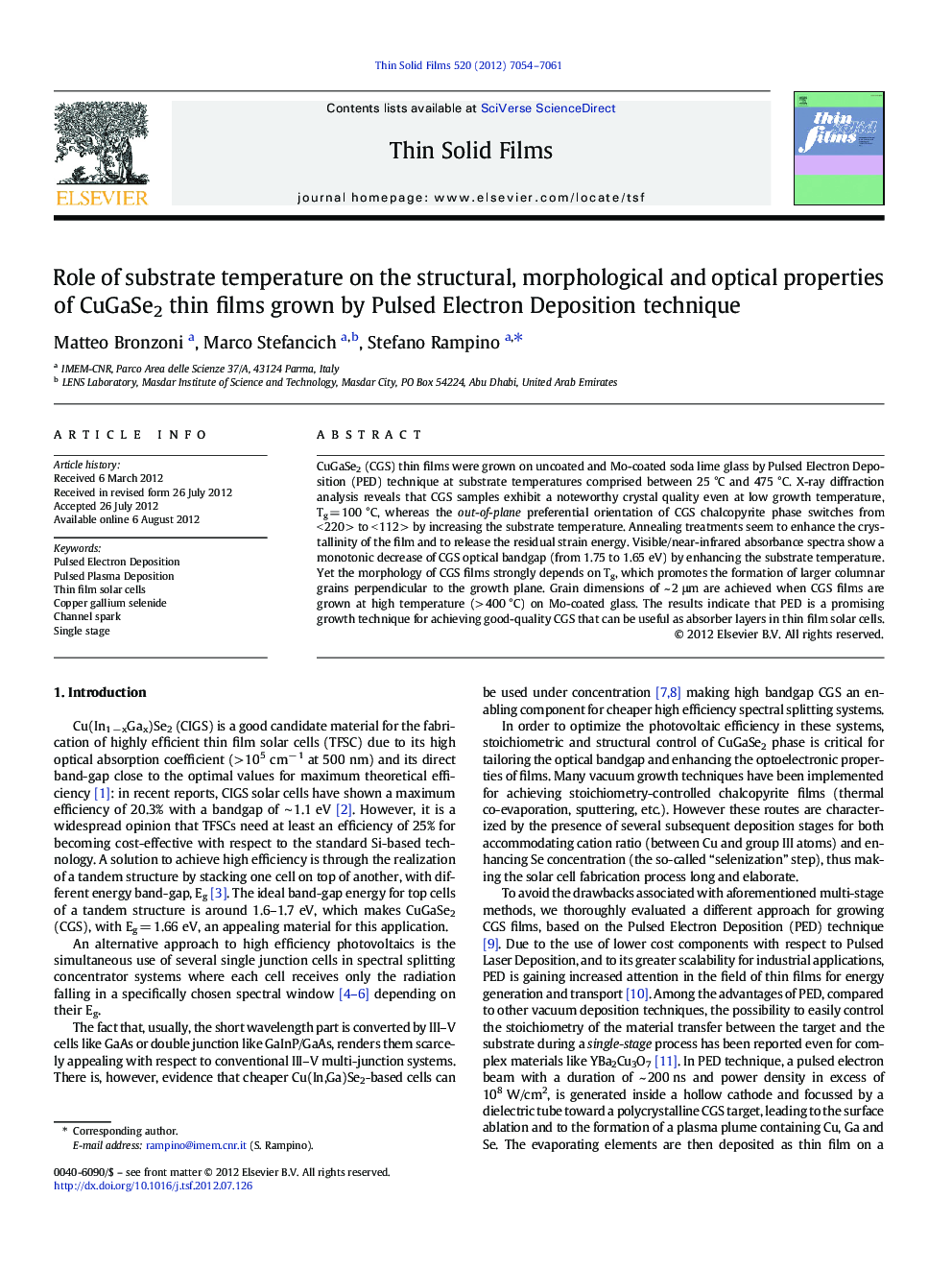| Article ID | Journal | Published Year | Pages | File Type |
|---|---|---|---|---|
| 1666727 | Thin Solid Films | 2012 | 8 Pages |
CuGaSe2 (CGS) thin films were grown on uncoated and Mo-coated soda lime glass by Pulsed Electron Deposition (PED) technique at substrate temperatures comprised between 25 °C and 475 °C. X-ray diffraction analysis reveals that CGS samples exhibit a noteworthy crystal quality even at low growth temperature, Tg = 100 °C, whereas the out-of-plane preferential orientation of CGS chalcopyrite phase switches from < 220 > to < 112 > by increasing the substrate temperature. Annealing treatments seem to enhance the crystallinity of the film and to release the residual strain energy. Visible/near-infrared absorbance spectra show a monotonic decrease of CGS optical bandgap (from 1.75 to 1.65 eV) by enhancing the substrate temperature. Yet the morphology of CGS films strongly depends on Tg, which promotes the formation of larger columnar grains perpendicular to the growth plane. Grain dimensions of ~ 2 μm are achieved when CGS films are grown at high temperature (> 400 °C) on Mo-coated glass. The results indicate that PED is a promising growth technique for achieving good-quality CGS that can be useful as absorber layers in thin film solar cells.
► CuGaSe2 (CGS) films were grown by Pulsed Electron Deposition (PED). ► Crystalline CGS films were obtained on amorphous substrates at T ≥ 100 °C. ► The optical bandgap of CGS films decreases by enhancing the growth temperature. ► A grain size of 2 μm is achieved in CGS films grown on Mo/glass at 400 °C. ► PED can be a promising technique to grow high-quality CGS films for solar cells.
